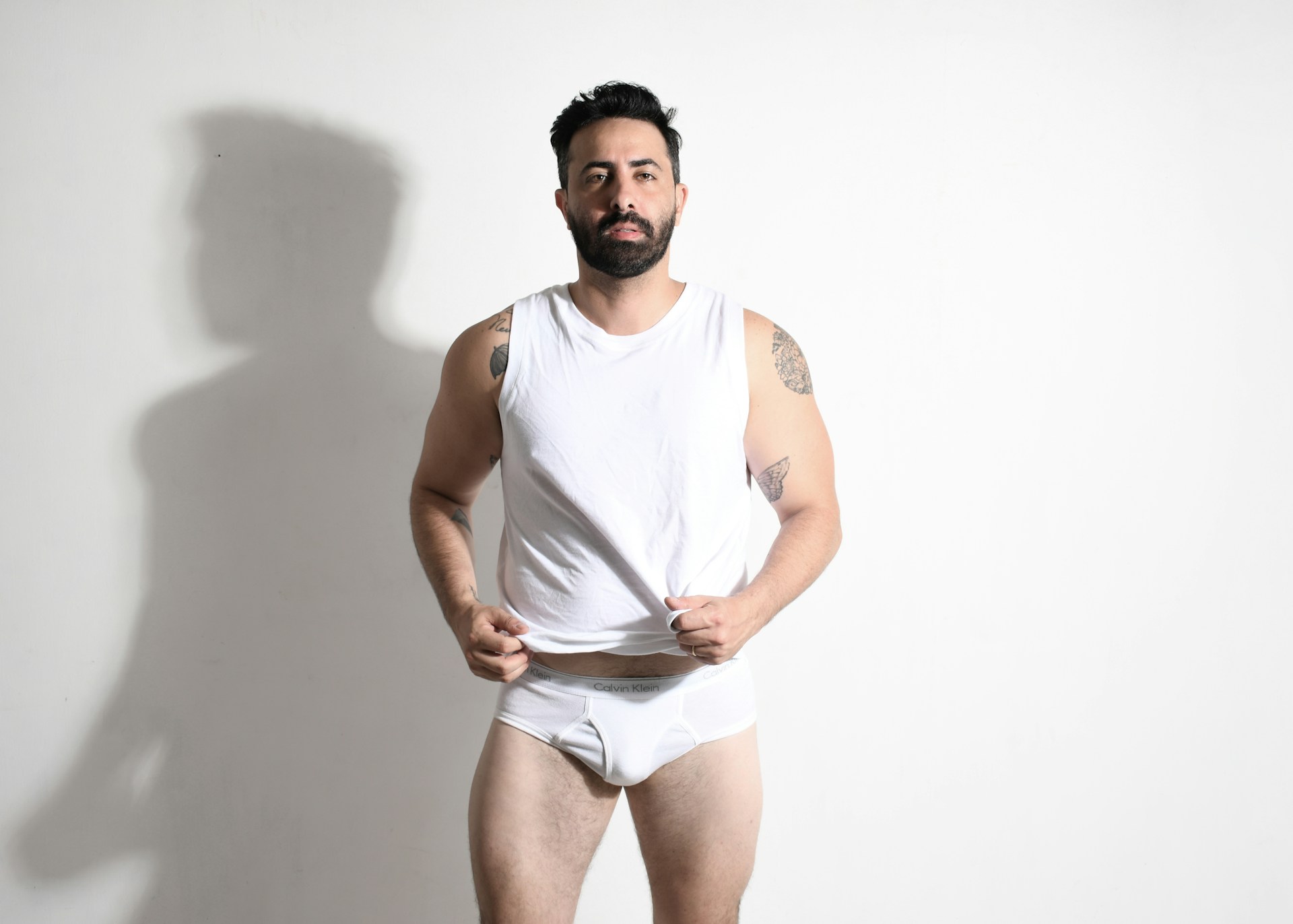Subscribe
Apple | Spotify | Amazon | Player.FM | TuneIn
Castbox | Podurama | Podcast Republic | RSS | Patreon
Podcast Transcript
If you are listening to me speak these words and can understand what I’m saying, then you are a human being.
If you are a human being, you are also a mammal, and if you are a mammal, you have hair….or at least the biological capability to produce hair.
But why exactly do we have hair? What function does it serve? Why do we have less than other animals? And why do people have different types of hair?
Learn more about hair, what it does and how it works on this episode of Everything Everywhere Daily.
In this episode, I’m going to be talking about hair. However, I’m not just going to be talking about human hair.
For all practical purposes, for the purpose of this episode, hair, fur, and wool will all be the same thing. Fur is just hair on animals, and wool is just animal fur that is turned into cloth.
So, let’s start out with the obvious starting point for this discussion: what is hair?
Hair is a feature found only on mammals. It is a filament made of protein, primarily keratin. Keratin is found on other animals and makes up scales, nails, feathers, horns, claws, and hooves. This is not to say that those things are the same as hair, but they do all have a similar protein base.
Hair generally consists of two parts. The shaft is what most people think of as hair. This is the long filament that is above the surface of the skin.
The other part is the follicle. The follicle is located below the surface of the skin. This is the root of hair strand and the part of hair that is alive.
Hair fibers are predominantly made up of the cortex, which provides strength, color, and texture; the cuticle, a protective outer layer; and sometimes a medulla, a central core.
This is a generalization because each species of mammal can have differences in hair and how hair strands are structured. For example, the quills on a porcupine are actually hair. Hair on a polar bear is very different than the hair on the mane of a lion.
The next big question is, what is the purpose of hair?
Hair has several functions, the biggest of which is insulation and temperature regulation. In colder environments, hair traps a layer of air close to the skin, reducing heat loss.
Hair allowed mammals to exist in cold-weather environments in which cold-blooded reptiles couldn’t survive. Some mammals, such as camels, use their hair to keep cool. The temperatures of their fur can be significantly warmer than the temperature of their skin.
The vast majority of mammals, but not all of them, are warm-blooded. One of the few mammals that aren’t warm-blooded is the naked mole rat, and the naked mole rat has almost no hair.
Being warm-blooded and having hair go hand in hand, but one thing we don’t know is which came first. Did hair allow for mammals to be warm-blooded, or did the fact that mammals became warm-blooded encourage the evolution of hair?
The reason we don’t know is because hair doesn’t easily make fossils. In some environments, hair can decompose in a matter of weeks. We can tell early mammals from their skeletal structure, but we can’t tell when hair first appeared.
The insulative value of hair is largely not a function of hair length. There are some mammals in the tropics with longer hair than some animals in the arctic, but they have less insulation.
Hair also has benefits beyond insulation and thermal regulation. Hair can provide a layer of protection. It can protect the skin from ultraviolet rays and in some species, hair can be thick enough to provide protection from physical damage.
Hair can also serve as camouflage in mammals and in some species hair can serve a sexual selection function similar to how birds use feathers.
The next question you might have, and probably the most common question people have about hair, is why different people have different types of hair.
There are roughly two different ways in which hair can vary between people: color and texture.
Hair color comes from the presence of melanin in hair follicles and strands. There are only two types of melanin in hair that are responsible for all the various shades of hair color: Eumelanin and Pheomelanin.
Eumelanin is by far the most common form of melanin. It comes in two forms: black eumelanin and brown eumelanin.
Black hair is by far the most common hair color in the world. Approximately 85{1eea65b97f16eaff88b6449ec4bd61d0a337087596df763590ffb883bdd967ce} of the world’s population has black hair.
Another 11{1eea65b97f16eaff88b6449ec4bd61d0a337087596df763590ffb883bdd967ce} of the world’s population has brown hair.
Collectively, black and brown eumelanin is responsible for the hair coloring of 96{1eea65b97f16eaff88b6449ec4bd61d0a337087596df763590ffb883bdd967ce} of the world’s population.
Pheomelanin is much more rare. Pheomelanin is the melanin that is responsible for red hair. Only about 1{1eea65b97f16eaff88b6449ec4bd61d0a337087596df763590ffb883bdd967ce} of the global population has red hair. However, there are many more people who carry the gene for red hair. This includes people outside of Europe in parts of North and West Africa.
The genetic origins of red hair are believed to have come from Central Asia.
The reason why so few people have red hair is because it is a recessive gene. That means that both parents have to carry the gene for someone to have red hair. Even then, if both parents carry genes for both eumelanin and pheomelanin, there is only a 25{1eea65b97f16eaff88b6449ec4bd61d0a337087596df763590ffb883bdd967ce} chance that a child will have red hair.
Blonde hair—and I should note that I’m talking about natural blonde hair—is found in only about 2{1eea65b97f16eaff88b6449ec4bd61d0a337087596df763590ffb883bdd967ce} of the world’s population. Blonde hair can have either pheomelanin or eumelanin, but it just doesn’t have much of it. Blonde hair is defined by a relative lack of melanin.
The rest of the population has white or grey hair. White and grey hair is just hair with even less melanin than blonde hair or even a total lack of melanin.
While some small numbers of people have naturally white or grey hair, most people develop grey hair with age.
Of course, these color classifications are not discrete. There are many shades of hair which can exist between black, brown, red, blonde, and grey.
The other thing that varies between people is hair texture. Hair texture is generally classified into four different types: straight, wavy, curly, and kinky.
Again, as with hair color, there are no bright lines between types of textures.
Hair texture is separate from hair color. Someone can have straight black hair or curly black hair, for example. However, like hair color, hair texture is largely a result of genetics.
The reason for hair texture is the hair follicle. The shape of the hair follicle (round, oval, or twisted) and the angle at which the hair shaft grows out of the scalp influence whether hair is straight, wavy, curly, or kinky. Straight hair grows out of an almost perfectly round follicle, while curlier textures grow from more oval or irregularly shaped follicles.
These hair follicle differences result in changes to the hair strand. When the hair strand is created, it results in changes in the disulfide bonds between keratin strands. The more disulfide bonds and changes in the positioning of the bonds can lead to tighter curls.
As with hair color, it is possible for hair texture to change over time as well.
Another question many people have about hair is why are humans mostly hairless compared to other animals?
This is more in the realm of speculation, but there several theories was to why humans have less hair than other primates.
One theory holds that the relative lack of hair on humans was due to humans evolving on the African savannah. Most apes live in forests where they are usually in the shade and where temperatures are cooler.
When humans left the forest for the grasslands, they encountered direct sunlight and higher temperatures. This would have given evolutionary pressure to reduce the amount of hair to reduce their body temperatures.
Another variation of this theory was that humans hunted on the savannah by engaging in long-distance running. Almost any prey can outrun a human over short distances. However, if you extend the distance, humans have the advantage. Larger animals, again covered in hair, will overheat over long distances.
The ability of humans to run farther without overheating was a huge advantage.
Another theory is known as the aquatic ape hypothesis.
This somewhat controversial theory proposes that human ancestors went through a semi-aquatic stage, which led to adaptations such as bipedalism and loss of body hair. Proponents suggest that, like other aquatic mammals, humans lost their body hair to streamline their bodies for swimming.
However, this theory has less support among scientists due to a lack of direct fossil evidence of aquatic life stages in human evolution.
Yet another theory posits that less hair may reduce the risk of harboring ectoparasites like ticks and lice, which can carry diseases. With less body hair, early humans could have had a survival advantage by being less susceptible to diseases spread by these parasites.
A further theory is that humans evolved to have less hair through sexual selection. According to this theory, as human societies became more complex, traits seen as more attractive or desirable, such as less body hair, were selected for. This could have been driven by a preference for visible skin as a display of health or a preference for novel traits, which, over generations, led to reduced hairiness.
Once humans migrated out of Africa and moved to colder climates, they were able to compensate for their lack of hair by wearing clothes and furs from other animals.
As I mentioned before, hair and fur are really the same thing. However, while the basics of hair are generally the same, many species have evolved very different types of hair.
Polar bear have some of the most unique hair in the animal kingdom. Despite appearing white, polar bear hair is actually transparent.
The hairs of a polar bear’s coat are hollow, an unusual characteristic among mammals. This hollow structure provides excellent insulation, effectively trapping heat. The air-filled shafts also help increase the bears’ buoyancy while swimming.
Another animal with unique hair is muskoxen. Muskoxen live above the Arctic Circle and have some of the best-insulating furs in the animal kingdom.
Muskoxen have two layers of fur. During the winter, they grow a very soft, short underlayer of fur known as Qiviut (kiv’-ee-ute).
After the winter is over and spring begins, muskoxen shed their layer of Qiviut. This is collected by the native Inuit people and turned into clothing.
Qiviut is one of the highest quality, lightest, strongest, warmest, and most expensive wool products in the world. It is eight times warmer than regular sheep wool.
I first encountered qiviut when I visited the Alaska Zoo, which had muskoxen. They would collect the qiviut every year and create a limited number of items like hats and scarves…..and they were some of the most expensive woolen items I’ve ever seen.
A single ball of pure qiviut yarn sells for $150, and knitted products can sell for much, much more. Hats and scarves can go for several hundred dollars, and sweaters can sell for thousands.
However, the winner of the warmest fur in the animal kingdom contest is the sea otter.
Unlike most aquatic mammals, sea otters do not rely on a layer of body fat for insulation. They almost entirely use their hair to keep warm.
Sea otter fur is the most dense of any animal in the world. They have 150,000 strands of hair per square centimeter or 970,000 strands per square inch.
The combination of longer guard hairs and short underfur hairs keeps water off the sea otter’s skin, keeping it warm.
The thickness of the sea otter fury made it a target for fur traders and caused their population numbers to decline rapidly in the 19th century.
We deal with hair almost every day, but most people don’t think about how complicated or how important hair is. Hair is one of the things that makes mammals what they are and what helps gives most of us a unique identity.
The Executive Producer of Everything Everywhere Daily is Charles Daniel.
The associate producers are Ben Long and Cameron Kieffer.
Today’s review comes from listener professor_doom over on Apple Podcasts in the United States. They write:
great pod
Im not sure how one could pack that much info into such a short podcast but is always informative, interesting and a hoot.
Thanks, professor_doom! Packing in that much information is easy. I just write out a script for a show and then put it into a data compressor.
Remember that if you leave a review or send me a boostagram, you too can have it read on the show.



